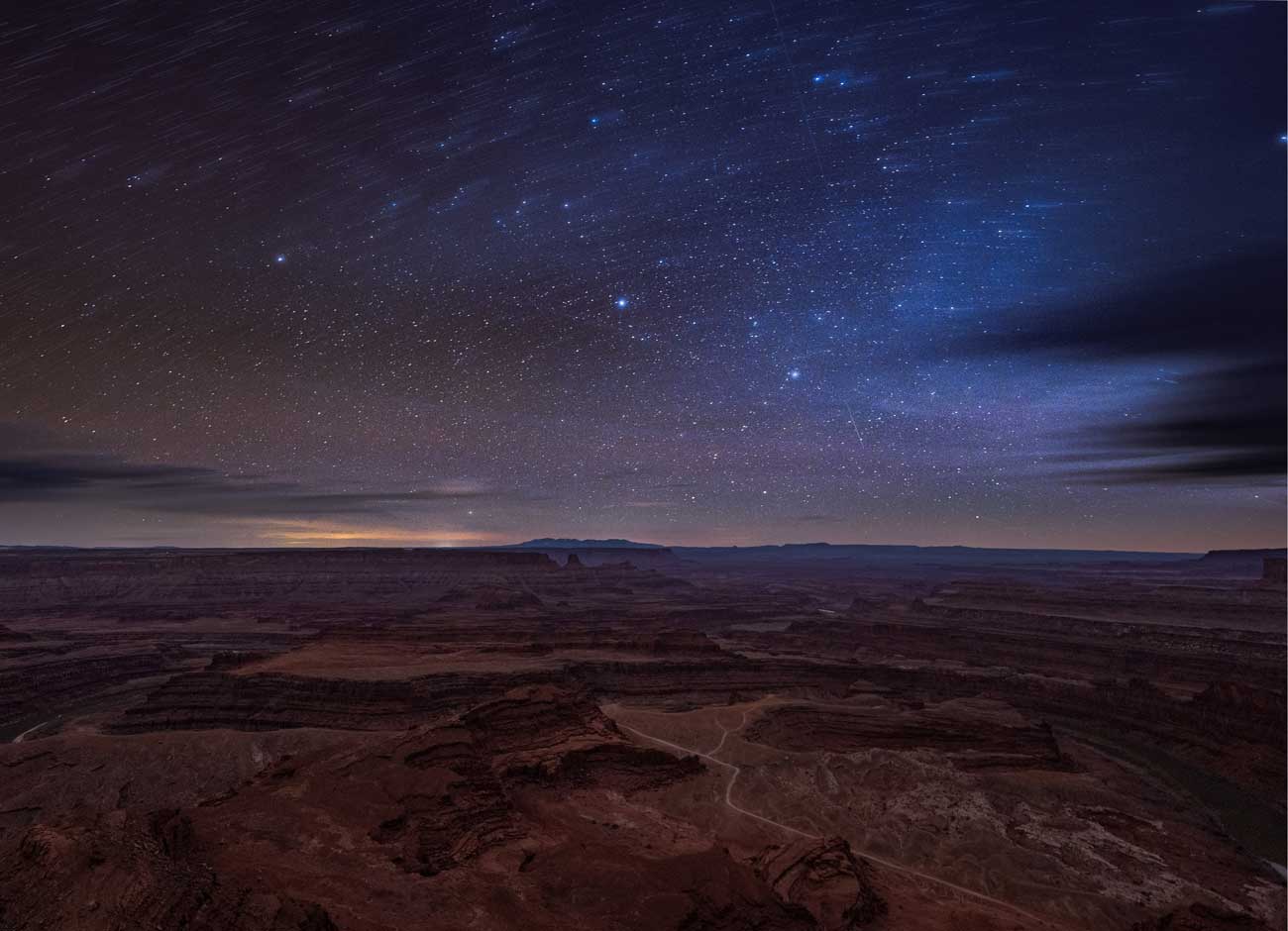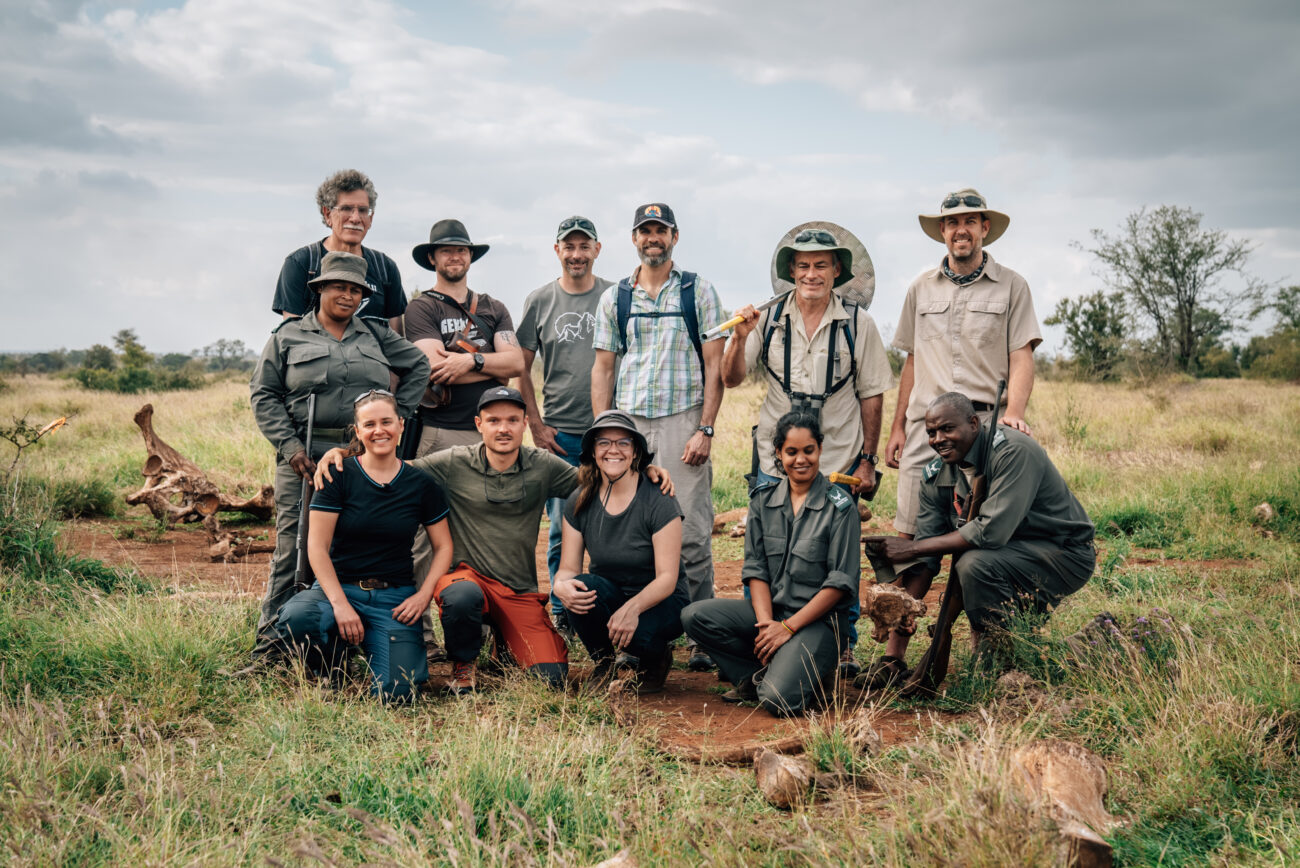A Space for Darkness

Utah is famous for its wild spaces.
In 2019, tourists spent more than $10 billion in the state, with travelers seeking adventure in Utah’s vast park system among its highest spenders. But the state is also rich with darkness—a shrinking well that human development continues to deplete.
“Two-thirds of Americans live in a place where they can no longer see the Milky Way,” says Zach Miller, assistant professor of park and protected area management. “People call it the pathway through the sky, the backbone of the universe; it is like the bridge between the spirit world and the people world, and the disconnection from that is crazy.”
There is a term for the diminished relationship between humans and nature.
“We call that the extinction of experience,” Miller says. “Most people have never seen really pristine sky before. It’s almost such a novel experience that it makes people a little uncomfortable.”
Stargazing is the original GPS system. For centuries, mapping the night sky allowed humans to navigate the world and wonder about their place in it. Increasingly, light pollution makes the simple act of looking up at the stars nearly impossible. Light pollution has been documented to interfere with the navigational abilities of wildlife like sea turtle hatchlings and birds. But what about its effects on us? There is evidence that light can disrupt circadian rhythms in humans, which is associated with depression, insomnia, cardiovascular disease, and some forms of cancer.
“As we continue to develop the world, it’s necessary to have places that are reservoirs of silence, reservoirs of these dark skies—those most essential things of what it means to be connected to the rest of the universe.”
Zach Miller
While a researcher at Penn State, Miller tested how light pollution altered people’s mood and emotions in a lab setting. Using augmented reality, his team found that the darker the night sky appeared, the more restored people reported feeling. Miller is now bringing the lab to Utah dark sky parks. This spring, he and members of USU’s Institute of Outdoor Recreation and Tourism will measure how visitors experience awe at eight different state and national parks with dark sky designation in Utah. The effort also includes quantifying the economic benefits of dark sky tourism for local communities to aid in planning practices.
“We don’t have opportunities to experience a lot of awe in our everyday lives,” Miller says. “We are behind computers, we are on our phones, we see things on TV, but when you look at something as vast as the universe and you see a really dark sky and how much is out there, those are transformative experiences.”
The National Park Service is mandated to protect natural resources for future generations to experience and Miller’s research tries to help salvage the ecological health of these preserved spaces so people can have transformational experiences. But what does that look like? Perhaps it is a close encounter with a grizzly or bison, the melody of birdsong at dusk. For others, it could be the dumbstruck feeling of looking up at a sky smeared with starlight for the first time.
“As we continue to develop the world, it’s necessary to have places that are reservoirs of silence, reservoirs of these dark skies—those most essential things of what it means to be connected to the rest of the universe,” Miller says.
When the COVID-19 pandemic hit in March, Utahns retreated to nature in droves. If the pandemic has taught us anything,” Miller says, “it’s that these protected areas provide essential services for human health and well-being and people are definitely noticing that.”





